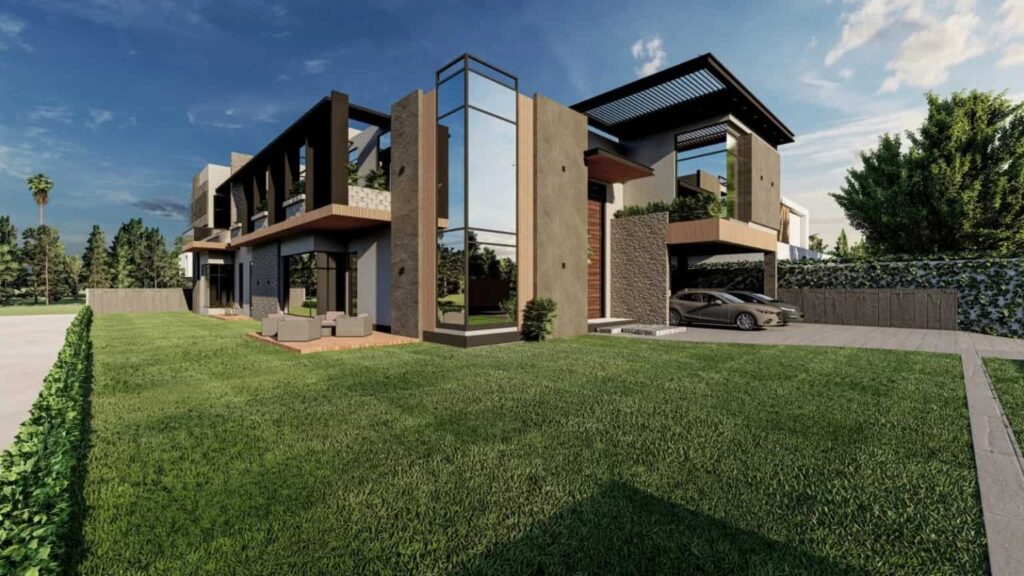Renovating your home can feel exciting but also a bit overwhelming. Whether you’re updating just one room or giving your whole house a fresh new look, a proper plan can save time, money, and effort. A successful interior renovation is not only about looks—it’s about improving your daily comfort, using space smartly, and making sure the design fits your lifestyle.
Home interior design plays a big role in how renovation projects start and how well they finish. It is important to understand your goals before picking up the tools or calling a contractor.
Understand Why You Want to Renovate
The first question you should ask yourself is: Why am I renovating?
Is it because your house looks outdated? Are you expecting guests often and want a nicer drawing room? Do you need more storage space in the kitchen? Are your walls damp or cracked? Defining your reason gives your renovation a clear purpose and helps in taking better decisions.
In Pakistan, many people renovate before a wedding, Eid season, or after shifting to a new home. Common goals include better lighting, modern paint, new flooring, or creating more space.
Make a Rough Budget
Budgeting is a critical part. Many projects in Pakistan get stuck halfway because the money runs out. Sit with your family and decide how much you can spend comfortably. Don’t forget to keep 10–15% extra in case costs increase.
Some costs to include:
- Labour (mistry, plumber, electrician)
- Paint, tiles, cement, wood
- Furniture polish or new fittings
- Delivery and transport of materials
- Waste cleaning or shifting
Once your budget is set, stick to it as much as possible. Small savings in planning can save big costs during the work.
Research Ideas That Match Your Style
Every family has a different taste. Some prefer simple white walls and classic designs, while others like bold colours or decorative ceilings. Look at online platforms, Pinterest boards, and local home pages to gather ideas. You can also take inspiration from friends’ houses or TV serials.
Note which materials you like—wooden floors, marble counters, paint textures, ceiling lights, or wall art. Don’t copy everything—just pick what suits your lifestyle.
Measure Your Space Carefully
This step is often ignored in Pakistani households. Before buying anything—curtains, wardrobes, tiles, etc.—measure your room size, ceiling height, and window positions. A large sofa might look beautiful in the shop but block your passage at home.
Measuring helps in planning properly and avoiding returns or adjustments later.
Choose the Right Team
Whether you go for a full interior renovation or just want to update a few parts, choosing the right person for the job is important. This includes:
- A mason (mistry) for civil work
- Electrician for lights and wiring
- Carpenter for woodwork
- Plumber for bathrooms and kitchens
- Painter for walls and ceilings
If you’re planning a big renovation, it’s better to consult top architects or experienced interior designers. They help you choose better materials, make strong layouts, and avoid mistakes that cost time and money later.
Decide on Design Elements
This is the fun part. Choose paint colours that make rooms feel brighter and bigger. Go for tiles that are easy to clean and don’t get slippery. Use modern ceiling designs with lights to give a nice look.
Some design tips for Pakistani homes:
- Use soft, neutral colours like beige or light grey for small rooms
- Add one “feature wall” with textured paint or wallpaper
- Use storage furniture to save space
- Put energy-saving LED lights or spotlights
- Use proper exhaust and ventilation in bathrooms and kitchens
Think About Functionality
Beauty without comfort is not useful. A well-renovated home should make your daily routine easier. For example:
- A kitchen with drawers and open shelves is easier to manage
- Bathroom tiles should not be slippery
- Bedrooms should have light switches near the bed
- Study areas need proper light and plug points
Also, don’t forget your elders or children—keep safety in mind for stairs, bathroom fittings, and window heights.
Plan the Sequence of Work
Many people make the mistake of painting the walls first, then installing false ceilings or tiles. This leads to repeated cleaning or damage. Follow this basic order:
- Breakage and removal (if needed)
- Civil repair and wall work
- Plumbing and electrical setup
- Flooring, tiles, or marble
- False ceiling or lighting
- Wall painting
- Woodwork or furniture installation
- Final cleaning and decoration
This way, your home remains neat and the quality of work stays high.
Be Present or Assign Someone Trustworthy
A renovation project in Pakistan needs attention. Things don’t always go as planned. Labour may not show up. Materials might not arrive. That’s why either you or a trusted family member should visit the site daily. Keep an eye on progress, quality, and timing.
Final Touches Make a Big Difference
Once the major work is complete, polish furniture, clean walls, and fix any errors. Add curtains, cushions, and decoration pieces. Make sure all switches, pipes, and locks work perfectly. Take your time with this step—it brings the entire design together.
- Modern House Design & Residential Construction | The M Square
- Explore innovative house design services and efficient residential construction solutions with The M Square. Bringing modern architecture to life in Pakistan.
Related posts:
 The Complete Guide to Selecting the Best Italian Marble to Install in Your Home or Office
The Complete Guide to Selecting the Best Italian Marble to Install in Your Home or Office
 The Hidden Power of Two Face Tape in Next-Gen Packaging Solutions
The Hidden Power of Two Face Tape in Next-Gen Packaging Solutions
 Confidential & Convenient: Get an STD Test at Home with Doctor on Call in Dubai
Confidential & Convenient: Get an STD Test at Home with Doctor on Call in Dubai
 Why Ricksmainroofing Is the Go-To Choice for Expert Roofing Services in New Canaan
Why Ricksmainroofing Is the Go-To Choice for Expert Roofing Services in New Canaan
 Why Artificial Turf Is Ideal for Beautiful, Low-Maintenance Galloway Lawns
Why Artificial Turf Is Ideal for Beautiful, Low-Maintenance Galloway Lawns
 Are Imprinted Concrete Driveways a Good Choice for Your Home?
Are Imprinted Concrete Driveways a Good Choice for Your Home?
 How to Plan a Successful Poultry Farm Construction Project Easily
How to Plan a Successful Poultry Farm Construction Project Easily
 Struggling with Flat Pillows? Discover the Lasting Fluff of Down Feather Options
Struggling with Flat Pillows? Discover the Lasting Fluff of Down Feather Options






